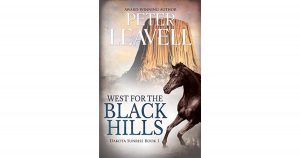by Peter Leavell, @PeterLeavell
The sword in the stone. “As you wish.” Tilting at windmills. “Luke, I’m your father.” The wife in the attic. “It’s alive!” An arrow punctures his heel. “To be, or not to be.” Three wishes. Three ghosts. “Call me Ishmael.” Nine circles of hell. “One ring to rule them all.”
Iconic stories weave a tapestry through our very existence. I don’t have to cite these examples, and if I explained the story to each, I insult your intelligence. They simply define each and every one of us. We embrace them or we push away from them—either way, we interact with them.
Should we use iconic stories as reference points in our novel?
If you choose yes.
When you drop in a timeless classic into your work, you connect with the reader to create an emotion that they already have. They’ve read the story, so they come equipped with the emotions you want to tap.
For example, he felt as if others were Lilliputian. While you would certainly change this sentence to show and not tell in your work, the idea that he is large and everyone else is small is already installed in the reference. But you’re adding another layer. You’re connecting to the reader’s time spent with Gulliver in his travels. This opening draws on the reader’s imagination with dual advantage, both in the moment they are reading your novel and the experience they enjoyed reading Gulliver’s Travels. In other words, your work is connecting with them deeply through several avenues.

If you choose no.
You’ve built an insular world by your own hand. The reader is drawn to the immediacy of the characters, and they are pulled into a connection to the character through their own experiences without the baggage of other stories. There’s no comparison to Don Quixote, Jane Eyre, Luke Skywalker—the world you create stands on its own.
What I recommend if you choose to leave iconic stories and music out is to create your own stories the characters discuss. To draw on your own imagery can be particularly poignant in romance, where falling in love reflects a feeling of the divine, of spiritual joy that exceeds simple description, and she makes him feel like a noble knight, or he makes her feel safe and whole again. Create a story that the characters can use as an analogy in hopes the reader can connect at a deeper level. Tolkien was a master.
Iconic stories help every human to make sense of the world, and your characters can use iconic storylines to help both them and the reader understand the world you create. Use them wisely. Use them well. And perhaps your story may be used as an icon.
Philip Anderson keeps his past close to the vest. Haunted by the murder of his parents as they traveled West in their covered wagon, his many unanswered questions about that night still torment him.
His only desire is to live quietly on his homestead and raise horses. He meets Anna, a beautiful young woman with secrets of her own. Falling in love was not part of his plan. Can Philip tell her how he feels before it’s too late?
With Anna a pawn in the corrupt schemes brewing in the nearby Dakota town, Philip is forced to become a reluctant gunslinger. Will Philip’s uncannily trained horses and unsurpassed sharpshooting skills help him free Anna and find out what really happened to his family in the wilderness?

Peter Leavell, a 2007/2020 graduate of Boise State University with a degree in history and a MA in English Literature, was the 2011 winner of Christian Writers Guild’s Operation First Novel contest, and 2013 Christian Retailing’s Best award for First-Time Author, along with multiple other awards. An author, blogger, teacher, ghostwriter, jogger, biker, husband and father, Peter and his family live in Boise, Idaho. Learn more about Peter’s books, research, and family adventures at www.peterleavell.com


Comments 1
So I’m OK to have used Monty Python in my novella?